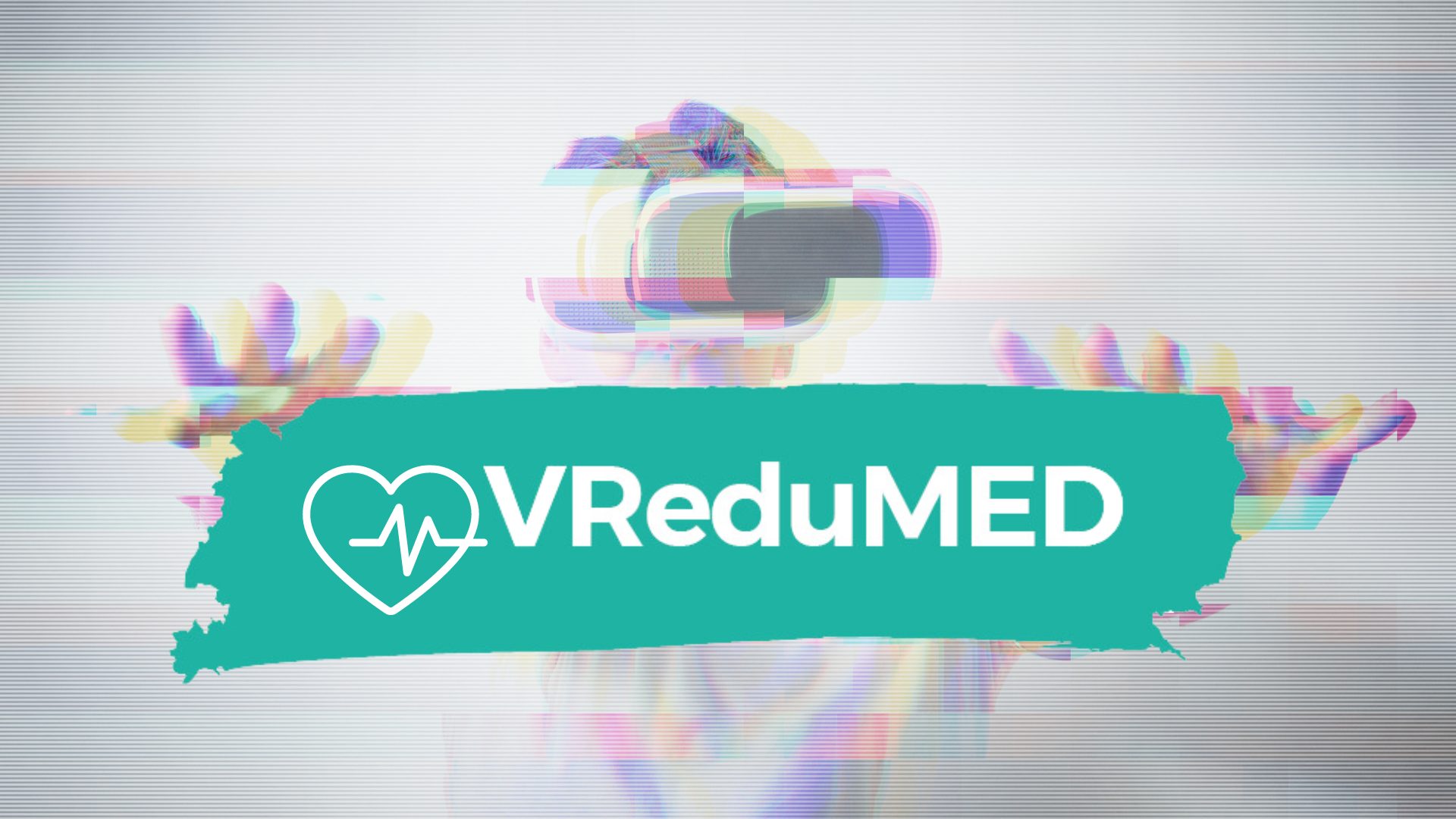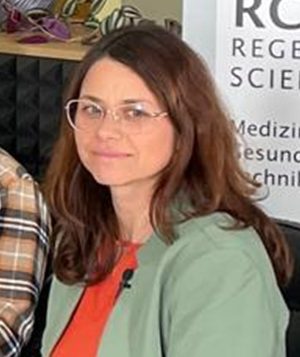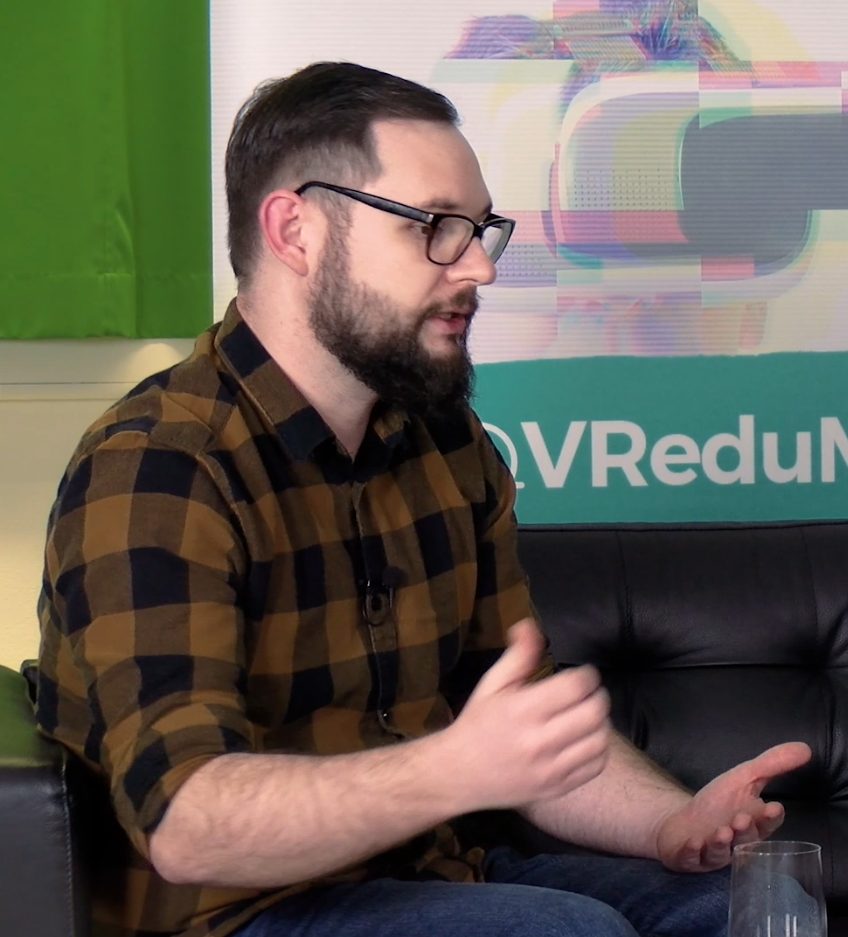
As part of a focus group interview, Christa Mohr from the OTH Regensburg spoke to three nursing educators representing different institutions:
Doris Hertel works as a nursing educator at the Regensburg Nursing Campus at St. Josef Hospital and was able to explore VR as part of her studies. Currently she is one of the representatives responsible for integrating VR into theoretical training and will try out the headset from the OTH VR lab.
Dominik Schrembs, who is very interested in technology, works as a nursing educator at Medbo KU, the medical facilities of the Upper Palatinate district. He has recently been entrusted with advancing and coordinating the topics of digitalization, artificial intelligence, and VR.
Nursing educator Ulrich Lutzke works in the management of the continuing education academy and is very dedicated to programming VR applications in the nursing field and implementing them with nursing students.
In Germany, there are numerous options for gaining a professional foothold in the care and social services sector. There are just as many opportunities to complete basic and advanced training and further education courses as well as courses of study that point the way ahead. Depending on the field of activity and level of responsibility, training courses and professions of varying scope, qualifications and entry requirements are offered.
Due to the abundance of these many training opportunities, some of them were structured and analyzed in more detail in a compact summary in the areas of “Professional training and study courses in the field of nursing” and “Assistant professions in the field of nursing”.
Dominik Schrembs: VR in nursing education offers immense potential for immersive learning.

Dominik Schrembs explains that the use of VR at the nursing school is currently being developed, and that coordination from the very beginning with the in-house technology team and those responsible for data protection is crucial. The VR hardware is currently being installed and tested with a stationary PC at the school, and a decision will then be made whether to switch to a standalone solution.
The wide range of different VR solutions makes things quite difficult for schools, Schrembs says. Deciding on a technical solution for VR headsets also means choosing the appropriate platform and thus committing to the respective system.
When asked about good technical implementation and effective use, Mr. Schrembs gives a very positive rating to the Wi-Fi solution with dedicated hotspots for VR streaming, as it clearly separates VR from other networks.
Regarding the didactic implementation of VR, Mr. Schrembs mentions that some colleagues see it as a hype, while others are critical of certain topics that are better taught through personal interaction rather than with this technology. Schrembs favors VR headsets as a supplement, as a voluntary option for teachers. He believes it offers a tremendous opportunity to reach different learning types and take advantage of immersion. Immersion in the VR scenario engages learners emotionally in a different way; it can be frightening, but it’s also fun.
Schrembs sees valuable added benefit and cost savings in VR training with AI extensions for adaptive communication training, as this could not be achieved quickly with conventional methods or with finite effort, and above all, could not be repeated several times.
Schrembs sees a difficulty or a limitation in the area of haptics and VR, when applications still have to be operated with controllers instead of hand tracking.
He also mentions that the headset can not only be used in class itself but – after appropriate technical briefing – also by students on their own for practicing and training with VR applications. This allows training without material consumption, skills lab reservations, and can easily be done, for example, before an exam. Mr. Schrembs considers this another valuable usage scenario for self-directed learning.
For successful practical use in nursing schools, a fundamental decision (also by the school leadership), that this technology can be used as a support is essential. Decision-makers at the school themselves should try out the headsets, get an impression, and then enable the talented members of the teaching staff to engage with this technology, receive the necessary resources, be able to contribute their technical knowledge, and also receive the appropriate appreciation. Interested students should also be involved in VR projects to promote and specifically integrate their talents. According to Schrembs, this potential is often not fully utilized in nursing education institutions.
Since the effort required for creating the appropriate 3D models for VR, for example, is so great and consumes so many resources, schools and teachers should reduce this effort, which would otherwise be incurred by everyone, through mutual exchange or collaborative development. Mr. Schrembs mentions the simulation network SimNOT as a good example. Regular meetings, the exchange of scenarios, and a database of 3D models would greatly support the sustainable use of VR in nursing education.
Doris Hertel: VR immersion enriches nursing training by simulating real-life scenarios

At Doris Hertel’s nursing school, the integration of VR is currently being prepared organizationally, technically, and, above all, didactically. The school will also utilize the opportunities offered by the VReduMED project. For Ms. Hertel, it is important that the instructors receive support with the technical integration and that the VR scenarios are well-supported didactically by the instructors so that the trainees also benefit from their use.
Hertel appreciates the potential of using VR to explore scenarios that are difficult to represent in the classroom or aren’t often experienced in practice. One example is the topic of resuscitation, where a VR application can offer students added value because the VR environment immerses them in this stressful situation, which can then be reflected upon in class.
Ms. Hertel also considers smaller applications helpful, such as training procedures that are to be completed independently, and afterward, the student is given feedback based on the evaluation, highlighting any steps they may have overlooked. The application of VR training in anamnesis conversations is also interesting, where the responses of the virtual patients are adjusted according to the nursing students’ questions, and communication can be learned through the interactive process.
Doris Hertel sees the immersion in VR worlds, which are experienced differently than, for example, a “staged scene”, this training in the virtual world, which can and should also be fun, as a valuable enrichment.
According to Ms. Hertel’s experience, it is important for care facilities that want to use VR to give teachers the opportunity to familiarize themselves with the VR headsets and VR applications, to clarify the resource issue and only then to begin using them gradually.
Doris Hertel also addresses the helpful exchange between nursing education institutions that deal with VR, through which teachers can network on VR applications in the sense of Open Educational Resources and exchange information on the results.
Ulrich Lutzke: Successful VR in nursing education requires strong tech foundation and gradual integration

As part of his master’s thesis, Ulrich Lutzke was able to explore various VR solutions and, based on this, he was able to develop a complete resuscitation training program at his school, which he was able to evaluate with students of various educational levels, teachers, and school principals.
According to the experience of nursing educator Ulrich Lutzke, the successful use of VR begins with the appropriate technical framework such as WLAN designed for VR use and stable hardware installation.
For sustainable use in the classroom, good didactic integration is necessary to gain the acceptance of the teachers. It’s particularly important not to expect too much at once from the VR application.
Ulrich Lutzke sees VR applications that address nursing specializations as a valuable support for generalist training, as well as for supporting people who have little previous experience or are only trained in a specific area in getting to the same level, or to give them the opportunity to think outside the box.
Mr. Lutzke sees great potential for VR in virtual simulations of, for example, dangerous situations, where faulty behavior can be safely analyzed and correct behavior can be trained. VR offers a protected space for immersive learning without distraction, allowing for reflection and repetition. At the same time, it is also intensive and requires high levels of concentration, as students confirm.
The fundamental question of using VR in nursing education should be addressed at the very beginning for schools considering its use. If the teaching staff agree in advance on which use cases within the curriculum make sense to be supplemented by VR, this will ensure a good start for the teachers, says Ulrich Lutzke. Training teachers and providing them with technical support is also crucial for successful implementation. The technology should also be introduced gradually, with individual small scenarios that are tested, evaluated, and optimized for future growth.
For sustainable development, Ulrich Lutzke believes that networking and exchange between schools and teachers who work with VR will be helpful, as they should share their experiences and thus support each other.